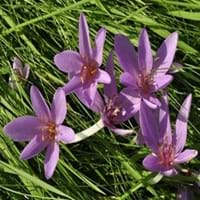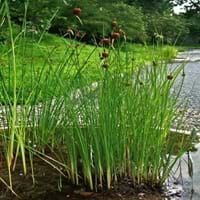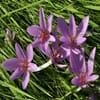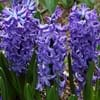Life Span
Perennial
Perennial
Type
Bulb or Corm or Tuber
Aquatics
Origin
Hybrid origin
Eastern Europe, Western Asia
Types
boissieri , cupanii , hungaricum , kesselringii
Common Cattail, Southern Cattail, Dwarf Bulrush
Number of Varieties
Not Available
Habitat
Temperate Regions
Lake margins, Ponds, Swamps
USDA Hardiness Zone
Not Available
3-11
AHS Heat Zone
Not Available
12-1
Habit
Clump-Forming
Upright/Erect
Flower Color
Purple, Violet
Yellow, Green, Brown, Chocolate
Flower Color Modifier
Bicolor
Not Available
Fruit Color
Not Available
Light brown, Light Red
Leaf Color in Spring
Green
Green, Dark Green
Leaf Color in Summer
Light Green
Green, Dark Green
Leaf Color in Fall
Several shades of Green
Green, Dark Green
Leaf Color in Winter
Light Green
Brown
Leaf Shape
Long Linear
Long linear and narrow
Plant Season
Spring, Fall
Summer, Fall, Winter
Sunlight
Full Sun, Partial Sun
Full Sun, Partial Sun
Type of Soil
Loam
Clay, Loam, Sand
The pH of Soil
Acidic, Neutral
Acidic, Neutral
Soil Drainage
Well drained
Poorly Drained
Bloom Time
Late Summer, Early Fall
Summer, Late Summer, Early Fall
Tolerances
Drought
Wet Site
Where to Plant?
Ground
Container, In Water
How to Plant?
Divison, From bulbs, Seedlings
Runners
Plant Maintenance
Medium
Low
Watering Requirements
Keep ground moist
Plant grows in water
In Summer
Lots of watering
Aquatic Plant
In Spring
Moderate
Aquatic Plant
In Winter
Average Water
Aquatic Plant
Soil pH
Acidic, Neutral
Acidic, Neutral
Soil Type
Loam
Clay, Loam, Sand
Soil Drainage Capacity
Well drained
Poorly Drained
Sun Exposure
Full Sun, Partial Sun
Full Sun, Partial Sun
Pruning
no pruning required
Prune in early spring, Remove damaged leaves, Remove dead branches, Remove dead leaves
Fertilizers
All-Purpose Liquid Fertilizer
Nitrogen, Phosphate
Pests and Diseases
Dry root rot, Pest Free
Red blotch
Plant Tolerance
Drought
Drought
Flower Petal Number
Single
Single
Foliage Texture
Coarse
Medium
Foliage Sheen
Glossy
Matte
Attracts
Whiteflies
Birds, Flying insects
Allergy
Poisonous to grazing animals
no allergic reactions
Aesthetic Uses
along a porch, deck or patio, Borders, Mixed Border, small hedge
Beautification, Showy Purposes, Water gardening
Beauty Benefits
No Beauty Benefits
Not Available
Environmental Uses
Air purification
Food for animals, Food for birds, Food for insects, Nesting sites for birds
Medicinal Uses
anti rheumatic, cathartic
Nutrients
Part of Plant Used
Root
Leaves
Other Uses
Showy Purposes
Decoration Purposes, Showy Purposes, Used as Ornamental plant
Used As Indoor Plant
No
Yes
Used As Outdoor Plant
Yes
Yes
Garden Design
Container, Cutflower, Foundation, Lawns and Turf, Mixed Border
Bog Garden, Container, Water Gardens
Botanical Name
COLCHICUM 'Lilac Wonder'
TYPHA minima
Common Name
Hybrid Autumn Crocus, Hybrid Meadow Saffron
Dwarf Cattail
In Hindi
meadow saffron
बौना कैटेल
In German
Herbstzeitlose
Dwarf Rohrkolben
In French
Colchique d'automne
Cattail nain
In Spanish
Estado de conservación
Espadaña enano
In Greek
meadow saffron
Νάνος Cattail
In Portuguese
Colchicum autumnale
Tifa Dwarf
In Polish
Colchicum autumnale
Dwarf Ożypałka
In Latin
autumnale
Pumilio Cattail
Phylum
Tracheophyta
Tracheophyta
Class
Magnoliopsida
Liliopsida
Family
Liliaceae
Typhaceae
Clade
Angiosperms, Monocots
Angiosperms, Commelinids, Monocots
Tribe
Not Available
Not Available
Subfamily
Not Available
Not Available
Number of Species
Not Available
Not Available
Difference Between Meadow Saffron and Dwarf Cattail
If you are confused whether Meadow Saffron or Dwarf Cattail are same, here are some features about those plants to help you choose better. Many people think that these two plants have the same characteristics, but one can see Meadow Saffron and Dwarf Cattail Information and learn more about it. Fertilizers required for proper growth of Meadow Saffron are All-Purpose Liquid Fertilizer, whereas for Dwarf Cattail fertilizers required are Nitrogen and Phosphate. Hence, one should know the basic difference between Meadow Saffron and Dwarf Cattail if you are planning to have them in your garden to enhance its beauty.
<
Flowering PlantsImportance of Meadow Saffron and Dwarf Cattail
Want to have the most appropriate plant for your garden? You might want to know the importance of Meadow Saffron and Dwarf Cattail. Basically, these two plants vary in many aspects. Compare Meadow Saffron and Dwarf Cattail as they differ in many characteristics such as their life, care, benefits, facts, etc. Every gardener must at least have the slightest clue about the plants he wants to plant in his garden. Compare their benefits, which differ in many ways like facts and uses. The medicinal use of Meadow Saffron is anti rheumatic and cathartic whereas of Dwarf Cattail is Nutrients. Meadow Saffron has beauty benefits as follows: No Beauty Benefits while Dwarf Cattail has beauty benefits as follows: No Beauty Benefits.
Compare Facts of Meadow Saffron vs Dwarf Cattail
How to choose the best garden plant for your garden depending upon its facts? Here garden plant comparison will help you to solve this query. Compare the facts of Meadow Saffron vs Dwarf Cattail and know which one to choose. As garden plants have benefits and other uses, allergy is also a major drawback of plants for some people. Allergic reactions of Meadow Saffron are Poisonous to grazing animals whereas of Dwarf Cattail have no allergic reactions respectively. Having a fruit bearing plant in your garden can be a plus point of your garden. Meadow Saffron has no showy fruits and Dwarf Cattail has no showy fruits. Also Meadow Saffron is not flowering and Dwarf Cattail is not flowering . You can compare Meadow Saffron and Dwarf Cattail facts and facts of other plants too.





